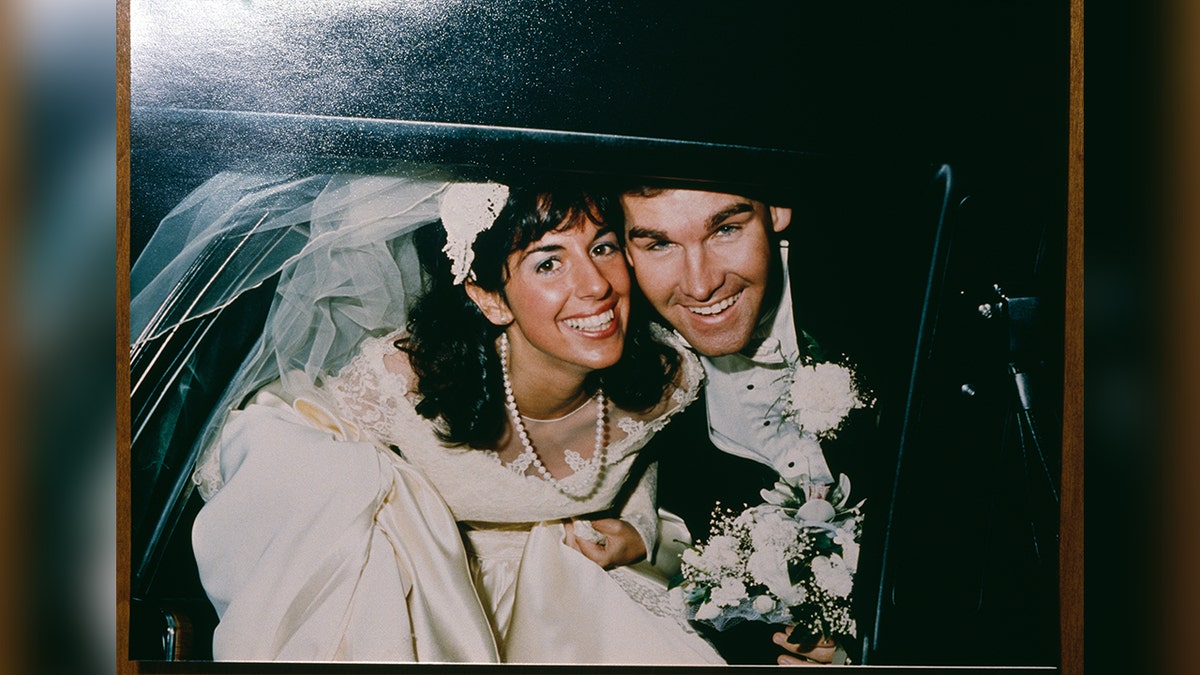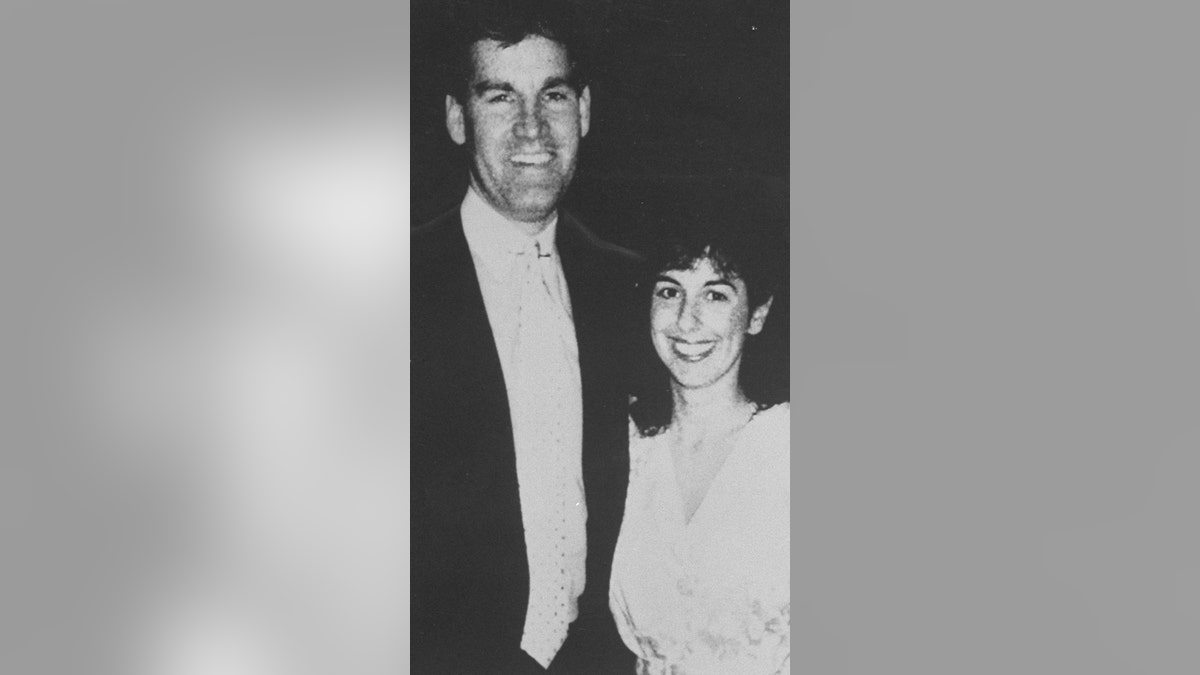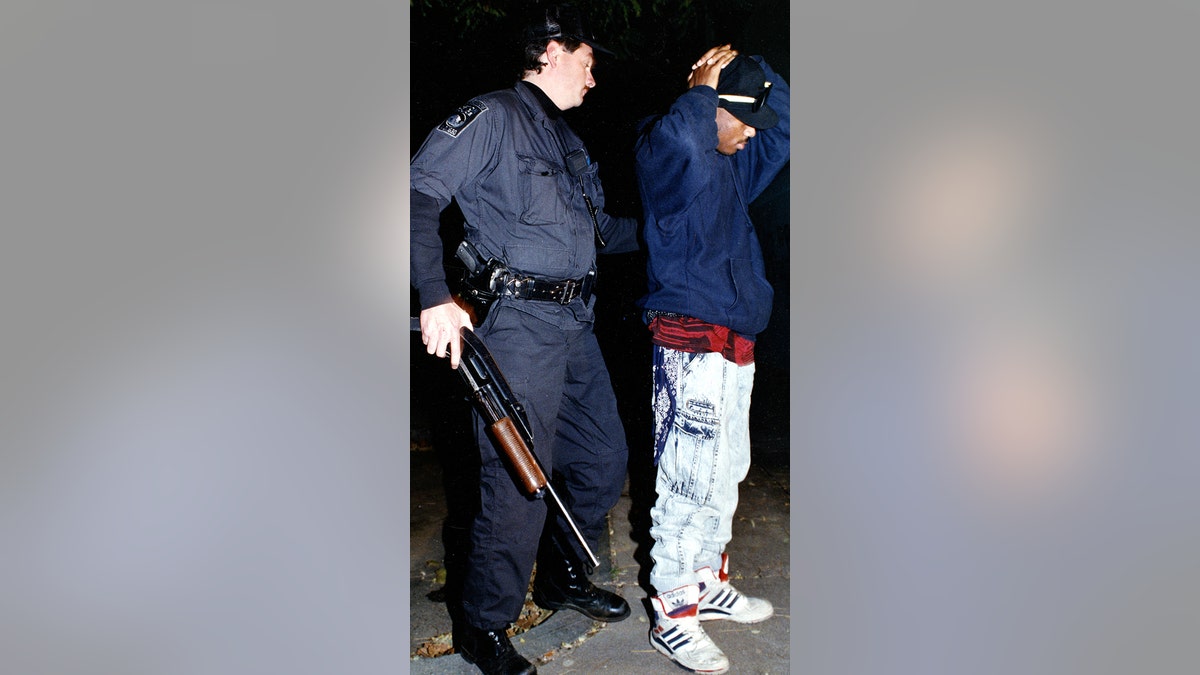Boston mayor issues apology in 1989 murder probe
Criminal defense attorney Brian Claypool joined 'America's Newsroom' to discuss the apology and the latest on the murder trial of Bryan Kohberger.
A new three-part docuseries takes a fresh look at Charles "Chuck" Stuart's money-motivated murder of his pregnant wife in 1989, his elaborate hoax to mislead police and its subsequent unraveling that gripped Boston and the nation.
HBO's "Murder in Boston: Roots, Rage and Reckoning" was made in conjunction with The Boston Globe and combines archival footage with fresh interviews to paint a fuller picture of the infamous, tragic debacle.
Carol DiMaiti Stuart, 30, was shot in the head in Boston's Mission Hill neighborhood shortly after she and her husband of four years, Charles Stuart, left a birthing class on Oct. 23, 1989.
"Rescue 911," a reality television series that rode along with emergency service personnel, captured the dramatic aftermath on film; Chuck and a visibly-pregnant Carol being extricated from their vehicle, the man's strained conversations with EMS workers as they tended to his own gunshot wound and their frantic admission to a hospital.
SUSPECTED WIFE KILLER BRIAN WALSHE DODGES ONE LEGAL HIT AS MURDER CASE WAITS FOR DNA

Carol and Charles "Chuck" Stuart married in October 1985. Carol was shot in the head on the night of Oct. 23, 1989, although her husband claimed a Black carjacker shot his wife. Police would later learn that he killed her in a plot for an insurance payout. (Getty Images)
At 2:50 a.m. the next morning, Carol succumbed to her injuries. Two months premature, her baby was delivered by cesarean section and baptized in the intensive care unit before dying 17 days later of oxygen deprivation and trauma sustained in the shooting, per the documentary.
Stuart would tell police that a young Black man with a raspy voice wearing a striped tracksuit forced his way into their car, ordered them to drive to the predominantly Black neighborhood and robbed them. Then, he claimed the unknown man shot him in the stomach with a silver gun before turning the weapon on his wife.
Charles' wound would lead to seven hours of life-threatening surgery, which those close to the case said strengthened the credibility of his story.
"To turn the gun and shoot yourself there?" said Dan Hickey, one of the paramedics who treated Stuart. "Why not in the arm, leg or shoulder?"
Although Boston Police Detectives Robert Ahearn and Robert Tinlin immediately doubted Stuart's story, suspecting he was the killer because he seemed too composed when recounting the attack, they were overruled by their superiors, The Boston Globe reported.
The Boston Police Department would carry out upwards of 150 "stop-and-frisk" searches in the city in the five days following the shooting. Then-Mayor Raymond Flynn ordered more than 100 extra police officers to search the city's predominantly Black neighborhoods, per the outlet.
MISSOURI WOMAN'S FAMILY BELIEVES HER DEATH IN MOTEL, RULED SUICIDE, WAS MURDER: 'MOST HORRIBLE CASE'
However, they would later learn that Stuart, who had wanted his wife to get an abortion and feared she would not resume her career as an attorney after giving birth, was the shooter all along.
The hoax was revealed after two innocent men were already arrested, when the killer's brother, Matthew Stuart, confessed his role in the scheme to police, per The Guardian.
On Oct. 27, 1989, before Matthew Stuart's confession upended the case, Boston Police arrested homeless Black man Alan "Albie" Swanson based on a tip that he matched Charles Stuart's description, according to the documentary.
When Officer William "Bill" Dunn searched Swanson's Cornelia Court apartment, per the documentary and reporting by The Boston Globe, a black tracksuit matching Stuart's description was found soaking in the sink, and several newspaper clippings pertaining to the Carol Stuart case were found behind his toilet.
MISSING WYOMING WOMAN'S ESTRANGED BOYFRIEND IS 'SUSPECT IN A HOMICIDE CASE': COURT DOCS

Charles Stuart worked as a fur salesman at Edward F. Kakas & Sons in Boston while his wife worked as a tax attorney at a publishing company. He received an $82,000 payout from his wife's life insurance policy after her death. He then purchased a Nissan Maxima car and women's jewelry, per The Boston Globe. (Photo by Steve Liss/Getty Images)
Swanson was charged with unarmed burglary, and his subsequent arrest and three-week incarceration was widely publicized.
Leslie Harris, Swanson's attorney, said he was "scared to death."
"He could barely talk," she recalled in the documentary. "He was the person they believed had done the killing of a White pregnant woman. He wouldn't have stood a chance in jail if they put him in the general population, because even Black inmates would have killed him – you don't kill a pregnant woman."
Swanson claimed he was too intoxicated at the time of the shooting to be Carol's killer. He was released when another Black man, William "Willie" Bennett, was arrested based on another tip.
MARY KAY LETOURNEAU'S FORMER STUDENT LOVER, WHO INSPIRED 'MAY DECEMBER' FILM, TO BECOME GRANDFATHER

Michael Stuart, pictured sitting in a white dress shirt, is pictured at a press conference with his siblings after admitting his role in the death of Carol Stuart. (Photo by Steve Liss/Getty Images)
A subsequent search uncovered a bullet in Bennett's mother's home that matched the caliber of the gun used in the murders, per The Boston Globe. The second man was arrested on Nov. 13, 1989. He had a lengthy arrest record, and police held him on an unrelated charge, per The Guardian.
Stuart would identify Bennett as his attacker in a police lineup, according to the outlet.
However, plagued with a guilty conscience, Matthew Stuart approached Boston detectives on Jan. 3, 1990. His attorney John J. Perenyi later told People that "the lineup" – the idea that an innocent man would be framed for Carol's murder – "pushed Matthew over the brink."
In mid-October, Matthew told homicide detectives, his brother asked him to "steal" Carol's jewelry from the couple's home. Stuart said he would then file a fraudulent insurance claim, per a transcript of his interview published by The Boston Globe.
MAYA KOWALSKI CASE: HOSPITAL DEMANDS NEW TRIAL CITING JUROR'S NOTE WITH ALLEGED NAZI SYMBOLS

A police officer is pictured searching a man in Boston's Roxbury neighborhood in 1989. More than 150 stop-and-frisk searches were carried out in the five days following Carol Stuart's shooting. (The Boston Globe via Getty Images)
The plan changed, he said, and he agreed to meet his brother in Mission Hill on Oct. 23 in exchange for $10,000. Charles told him he would throw a bag from his own car window into Matthew's, then Matthew would dispose of that bag – which turned out to be Carol's Gucci purse.
Along with the purse, People reported, Charles passed Matthew a nickel-plated, snub-nosed .38 revolver.
Matthew, who was 25 at the time, hid the bag in the Stuart family home before asking his best friend to help him throw the purse off the Dizzy Bridge in Revere, Massachusetts.
MICHIGAN LANDLORD PUNISHED AFTER HIDING BODIES OF RENTERS HE CLAIMED HE KILLED IN SELF-DEFENSE
However, Matthew held onto Carol's engagement ring, which he later handed over to authorities, People reported. He only learned that Carol had been killed the next day when he watched news reports the next day, he said. Over the course of his six-hour interview, he denied knowing his brother's intentions to kill his wife.
Per People, police recovered the revolver in the Pines River the next week.
However, the evidence did not contribute to Charles' conviction. After getting wind of his brother's confession, he drove his car – a $22,000 Nissan Maxima he had purchased with an $82,000 insurance payout from the publishing company where his wife worked, per the Greensboro News & Record – to the Tobin Bridge.
There, he jumped from approximately 145 feet to his death, per Boston.com.
In the passenger seat, Charles left a suicide note claiming he had been "sapped of [his] strength" by a "new accusation," Slate reported.

Police search the Pines River in 1990 for the gun believed to be used in the murder of Carol Stuart. Two days earlier, Charles Stuart killed himself after his brother Matthew confessed his role in Carol's murder to police. (The Boston Globe via Getty Images)
Even in death, Charles would fool those around him. Carl DiMaiti, Carol's sister, told the Greensboro News & Record that their family was "grieving" after his suicide because they "thought he killed himself through grief."
The next year, Matthew was convicted on obstruction of justice and insurance fraud charges, per Boston.com. He died of a drug overdose in a city homeless shelter 20 years later, the outlet reported.
In a later analysis by The Boston Globe, the outlet found that at least 33 people knew that Stuart had killed his wife before his brother confessed.
CLICK HERE FOR MORE TRUE CRIME FROM FOX NEWS
"Folks, Charles Stuart took us all in," Flynn later told reporters, per the Greensboro outlet.
"Murder in Boston" director Jason Hehir told WGBH that he was often asked why he "wanted to open [the] wound" of the controversial Stuart case with the new documentary.
"It's a good way of examining our past and examining the mistakes that were made," "The Last Dance" filmmaker told the outlet. "I always thought the Stuart case would be great, not only as a true-crime story with all the twists and turns and characters, but also as a way of examining Boston's fraught racial history through the lens of one case."
On Dec. 20 this year, Boston Mayor Michelle Wu issued a formal apology to Swanson and Bennett on behalf of the city.
"I am so sorry for what you endured," the mayor said during a news conference, per the Associated Press. "I am so sorry for the pain that you have carried for so many years… "What was done you was unjust, unfair, racist and wrong."





















